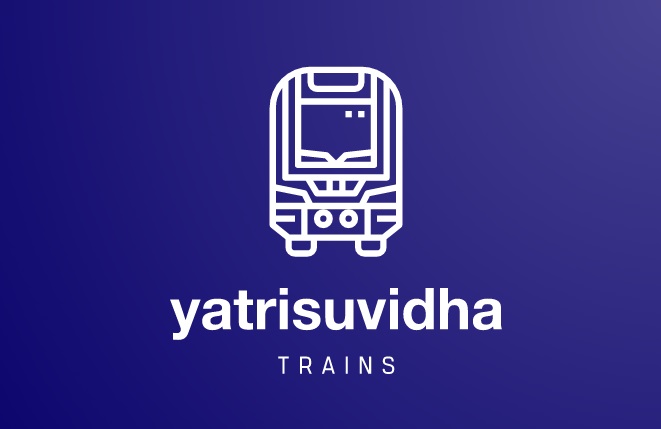
The Indian Railways network is one of the most complex and widely used rail systems globally, accommodating millions of passengers daily. Within this vast system, passenger comfort is a vital consideration, particularly with seating and sleeping arrangements in sleeper-class coaches. Among the berth types, the Middle Berth (MB) is one of the most common, especially in Sleeper and AC 3-Tier coaches. Understanding the unique features, advantages, and challenges of the middle berth offers insight into the overall passenger experience in Indian trains.
This article will explore the MB configuration, its importance in sleeper classes, its design, and the implications of the middle berth on passenger comfort.
- Understanding Berth Layout in Indian Railways
Indian Railways categorizes its seating and sleeping accommodations into various classes based on the level of comfort, amenities, and cost. Primarily, the sleeper classes in India consist of three common berth types:
Lower Berth (LB) – the lowest sleeping arrangement, located directly above the floor.
Middle Berth (MB) – situated between the lower and upper berths, the MB provides a middle-level sleeping arrangement.
Upper Berth (UB) – the highest berth in the arrangement, providing a sleeping space near the ceiling.
In sleeper coaches, a typical configuration includes three-tier arrangements, each set of berths creating a compartmentalized seating area for six passengers. The middle berth, as the name suggests, occupies the space between the lower and upper berths. In a packed system like this, each berth has a designated role in maximizing the use of limited space while maintaining individual privacy and comfort.
- Types of Coaches Featuring Middle Berths
Several types of coaches in Indian Railways include the middle berth. Each type offers different amenities but follows the same basic berth arrangement:
Sleeper Class (SL): The most common and affordable class in Indian Railways. Sleeper coaches are non-air-conditioned and have three-tier arrangements with lower, middle, and upper berths, and they also include side lower and side upper berths near the aisle.
AC 3-Tier (3A): An air-conditioned version of the sleeper class, AC 3-Tier coaches also feature the three-tier arrangement with middle berths. This class provides better privacy, cleanliness, and climate control than Sleeper Class.
AC 3 Economy (3E): Introduced as a more economical alternative to AC 3-Tier, the AC 3 Economy coaches maintain the middle berth but offer slightly less space and amenities than the standard 3A coaches.
Each of these coach types serves various traveler needs, but the presence of the middle berth remains a consistent feature for maximizing space.
- Design and Function of the Middle Berth
The middle berth has a specific design to maximize occupancy without significantly compromising comfort. Here are some key aspects of its design and functionality:
- Space Efficiency
The middle berth allows Indian Railways to increase the number of sleeping arrangements in a single coach. By creating three levels of berths on each side, the middle berth design nearly doubles the sleeping capacity in comparison to a two-tier arrangement.
- Folding Mechanism
One of the defining characteristics of the middle berth is its folding mechanism. During the day, the middle berth is folded up, allowing passengers seated on the lower berth to use the area as a seating space. At night, passengers unfold it for sleeping. This modular design optimizes space utilization for passengers’ varying needs at different times of the day.
- Supporting Chains and Locks
Middle berths are secured with metal chains or rods attached to the ceiling or walls, providing stability when the berth is occupied. Each berth has a locking mechanism that ensures it remains in place, either folded up or in the sleeping position.
- Comfort and Challenges of the Middle Berth
The middle berth’s design offers unique benefits, but it also presents challenges that can impact the comfort of passengers. Here are some key points to consider:
- Privacy
Compared to the lower berth, the middle berth offers slightly more privacy, as it is elevated from the ground. However, it is not as secluded as the upper berth, which may be preferable for those who value maximum isolation.
- Comfort Constraints
The middle berth is often perceived as the least comfortable sleeping arrangement for the following reasons:
Height Restrictions: The gap between the middle and upper berths can be limited, especially in older coaches. This limited space can make it difficult for taller passengers to sleep comfortably without feeling cramped.
Access Difficulty: Passengers need to climb up from the lower berth, which can be challenging for elderly or physically impaired travelers.
Restricted Views and Ventilation: The middle berth is often positioned such that it partially obstructs access to windows, leading to a less airy experience than the lower berth.
- Folding and Unfolding Inconvenience
Passengers on the middle berth often need to rely on the cooperation of those occupying the lower berth. During the day, the middle berth must remain folded to allow space for seating on the lower berth, which may lead to inconvenience for passengers looking to rest.
- Ticketing and Reservation for Middle Berth
When booking tickets in Sleeper or AC 3-Tier classes, the type of berth (lower, middle, or upper) can be requested, though availability may vary. The middle berth is generally preferred less compared to the lower berth, especially among elderly travelers who prioritize easier access.
Indian Railways allows travelers to select a preferred berth during booking, but the final allocation depends on berth availability and is confirmed at the time of ticket issuance. The preference system is designed to help accommodate passengers’ needs, but it cannot guarantee a specific berth.
- Advantages of the Middle Berth
While it may have some disadvantages, the middle berth also provides benefits:
- Balanced Comfort
For passengers who do not want to climb to the upper berth but prefer more elevation than the lower berth, the middle berth offers a middle-ground option.
- Secure and Stable Sleep
The middle berth can offer a more stable position compared to the upper berth, as it is closer to the train’s center of gravity. This can reduce swaying during travel, providing a smoother experience for those prone to motion discomfort.
- Modernization of Middle Berths in New Coach Designs
In recent years, Indian Railways has been introducing newer, more comfortable designs in sleeper coaches, including revised middle berth arrangements:
Enhanced Spacing: Modern coaches have increased the vertical space between berths, making the middle berth more comfortable for taller passengers.
Improved Safety Features: Updated latches and secure chains ensure that the middle berth remains stable during travel, enhancing safety.
Ergonomic Cushioning: Newer middle berths are fitted with better cushioning materials that provide added comfort for overnight journeys.
Indian Railways has also experimented with modular designs that can increase the convenience of using the middle berth without compromising space.
- Middle Berth Etiquette
Because the middle berth interacts closely with the lower and upper berths, certain etiquette is recommended to maintain a pleasant travel environment:
Cooperation on Folding: Passengers should be mindful of the need to fold the middle berth during daytime hours to provide seating space.
Respecting Privacy: Since the middle berth can often make interactions between passengers closer, it’s good etiquette to respect privacy and avoid excessive movement.
Cleanliness and Care: Passengers should keep their berth clean, as it is shared in a sense with lower berth occupants during seating hours.
- Future Improvements for Middle Berths
Given the role middle berths play in optimizing space, it is likely that Indian Railways will continue to make enhancements to improve passenger experience. Possible improvements include:
Enhanced Folding Mechanisms: Simplifying the fold/unfold process for ease of use.
Adjustable Berths: Future designs may allow for flexible berth height to accommodate passengers of different heights.
Digital Berth Preferences: Implementing technology that better matches berth preferences with passenger requirements for improved satisfaction.
The middle berth in Indian Railways is a prime example of the balance between efficiency and comfort in high-density passenger trains. Although it has unique challenges, the middle berth remains crucial in accommodating the millions of passengers who depend on sleeper-class coaches for affordable travel. Future advancements in berth design and coach modernization will likely further optimize the middle berth experience, ensuring it meets evolving passenger expectations.

Leave a Reply